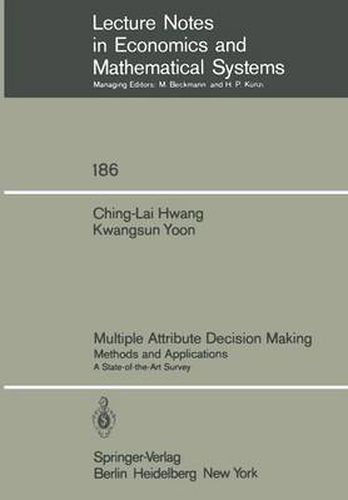Readings Newsletter
Become a Readings Member to make your shopping experience even easier.
Sign in or sign up for free!
You’re not far away from qualifying for FREE standard shipping within Australia
You’ve qualified for FREE standard shipping within Australia
The cart is loading…






This title is printed to order. This book may have been self-published. If so, we cannot guarantee the quality of the content. In the main most books will have gone through the editing process however some may not. We therefore suggest that you be aware of this before ordering this book. If in doubt check either the author or publisher’s details as we are unable to accept any returns unless they are faulty. Please contact us if you have any questions.
This mono graph is intended for an advanced undergraduate or graduate course as weIl as for the researchers who want a compilation of developments in this rapidly growing field of operations research. This is a sequel to our previous work entitled Multiple Objective Decision Making–Methods and Applications: A State-of-the-Art Survey, (No. 164 of the Lecture Notes). The literature on methods and applications of Multiple Attribute Decision Making (MADM) has been reviewed and classified systematically. This study provides readers with a capsule look into the existing methods, their char acteristics, and applicability to analysis of MADM problems. The basic MADM concepts are defined and a standard notation is introduced in Part 11. Also introduced are foundations such as models for MADM, trans formation of attributes, fuzzy decision rules, and methods for assessing weight. A system of classifying seventeen major MADM methods is presented. These methods have been proposed by researchers in diversified disciplines; half of them are classical ones, but the other half have appeared recently. The basic concept, the computational procedure, and the characteristics of each of these methods are presented concisely in Part 111. The computational procedure of each method is illustrated by solving a simple numerical example. Part IV of the survey deals with the applications of these MADM methods.
$9.00 standard shipping within Australia
FREE standard shipping within Australia for orders over $100.00
Express & International shipping calculated at checkout
This title is printed to order. This book may have been self-published. If so, we cannot guarantee the quality of the content. In the main most books will have gone through the editing process however some may not. We therefore suggest that you be aware of this before ordering this book. If in doubt check either the author or publisher’s details as we are unable to accept any returns unless they are faulty. Please contact us if you have any questions.
This mono graph is intended for an advanced undergraduate or graduate course as weIl as for the researchers who want a compilation of developments in this rapidly growing field of operations research. This is a sequel to our previous work entitled Multiple Objective Decision Making–Methods and Applications: A State-of-the-Art Survey, (No. 164 of the Lecture Notes). The literature on methods and applications of Multiple Attribute Decision Making (MADM) has been reviewed and classified systematically. This study provides readers with a capsule look into the existing methods, their char acteristics, and applicability to analysis of MADM problems. The basic MADM concepts are defined and a standard notation is introduced in Part 11. Also introduced are foundations such as models for MADM, trans formation of attributes, fuzzy decision rules, and methods for assessing weight. A system of classifying seventeen major MADM methods is presented. These methods have been proposed by researchers in diversified disciplines; half of them are classical ones, but the other half have appeared recently. The basic concept, the computational procedure, and the characteristics of each of these methods are presented concisely in Part 111. The computational procedure of each method is illustrated by solving a simple numerical example. Part IV of the survey deals with the applications of these MADM methods.